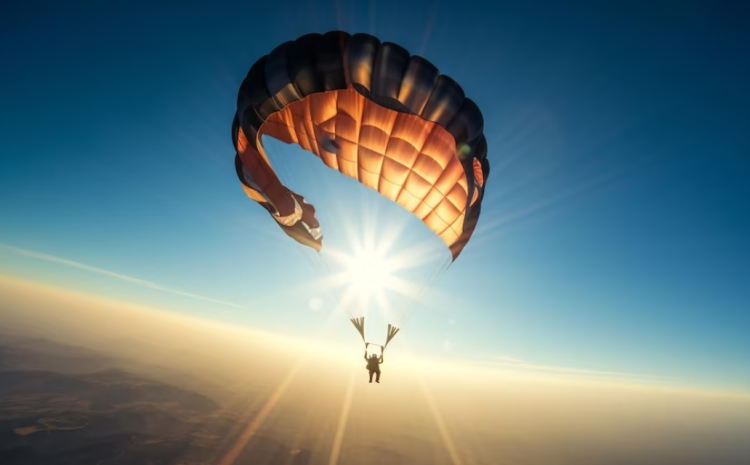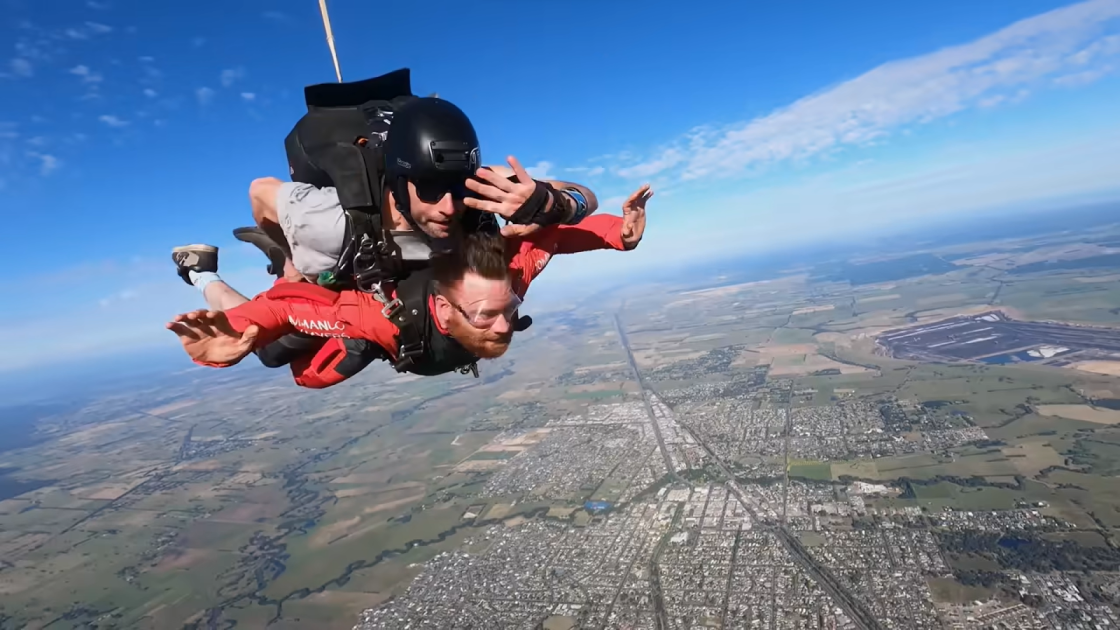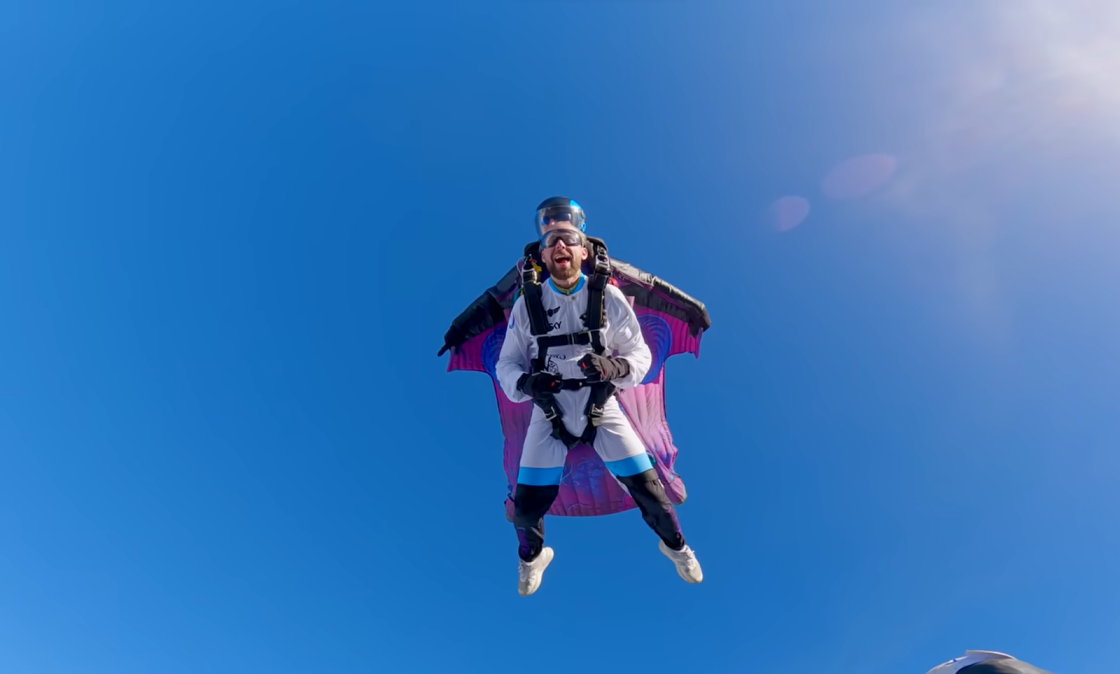Skydiving Landings: Gentle Touchdowns with Expert Guidance

Skydiving landings involve controlled arrivals, as skydivers utilize the parachute’s inputs to slow their forward and downward movement. Generally, landings are gentle, with skydivers touching down on their feet or buttocks. The importance of landing into the wind is emphasized during training, as it further aids the landing process.
When considering a skydiving adventure, most people focus on the exhilarating freefall experience—imagining the aircraft exit, the rush of wind against their face, and the overall sensation. Yet, fewer individuals contemplate the landing or the parachute ride itself. In this article, we’ll shed light on what you can expect during your skydiving landing, ensuring you are well-prepared for this thrilling journey.
What to Expect on Your Skydiving Landing
Skydiving landings have come a long way from the outdated parachute designs of the past. Contrary to common misconceptions, today’s modern parachutes offer controlled descents and gentle landings. If you’re planning to make a skydive with us, here’s what you can expect on your landing:
| Aspect | Description |
|---|---|
| Reduced Descent | As you approach the ground, you’ll experience a gradual reduction in descent speed and forward motion, ensuring a smoother touchdown. |
| Landing Options | Depending on the conditions, you’ll touch down on either your feet or your buttocks, providing a comfortable and controlled landing experience. |
| Supportive “Catchers” | For tandem skydivers, our expert team will be there to assist you during the landing. If winds are slightly higher, they will help deflate the parachute safely. |
Rest assured, on tandem skydives, your tandem skydiving instructor will manage the entire process, making the landing even easier for you! Just remember to lift your legs during the landing, which will be covered in detail during your tandem skydiving briefing. Embrace the excitement and enjoy the thrill of a safe and comfortable arrival back to earth.
Tandem Skydive Landings
A tandem skydiving landing closely resembles the landings made by sports parachutists. The tandem skydiving parachute shares the same square design as the sports counterparts, but it’s generally larger and more gentle in its response.
During the skydive, your tandem instructor might offer you the opportunity to handle the parachute at higher altitudes, allowing you to initiate a turn, for instance. However, they will regain full control when it comes to the landing. This is because they possess comprehensive training and experience in maneuvering the parachute precisely to the designated landing area. They skillfully adjust the parachute to face into the wind whenever possible and utilize the steering lines to slow down the descent for a safe and controlled landing.

The Three Landing Maneuvers for Solo Skydivers
Solo skydiving necessitates extensive training, sufficient skill, and ample experience to execute a safe landing on the ground. During AFF Training, student skydivers receive radio instructions from their instructors to learn three different approaches to landing.
As student skydivers gain more experience with solo landings, they gradually have the autonomy to choose their preferred landing approach.
Sitting or Slide-in Landing for Solo Skydivers:
The Sitting or Slide-In landing stands as the ideal, safest option for both tandem and solo skydiving, particularly for those lacking landing confidence or fearing injury. In this approach, solo skydivers lift their legs with toes pointing skyward, gently gliding to the ground at 1-6 mph. The buttocks absorb the impact, making it a secure choice, especially in anticipation of a challenging landing.
Due to the likelihood of muddy or grassy drop zones, skydivers should anticipate soiled clothing and shoes. Selecting suitable attire for the adventure is advisable, prompting many to explore alternative landing approaches.
Performing a Standing Landing When Skydiving:
The “Standing Landing” represents the ultimate feat for solo skydivers, aiming to gracefully come to a complete stop, landing upright on the balls of their feet seamlessly. If excessive speed challenges this, runners or walkers step in to compensate.
Despite its complexity, experienced skydivers may still face challenges due to flare height, timing, wind direction, and speed. Fortunately, canopy courses offered by skydiving schools and centers equip enthusiasts with the essential techniques, elevating confidence, satisfaction, and safety in executing the Standing Landing.
Once proficiency is attained through practice landings, skydivers can partake in competitive accuracy competitions, either individually or in groups. The objective is to land closest to the designated “dead center” target, with the highest combined scores securing victory.
Performing a Parachute Landing Fall (PLF) When Skydiving:
Regardless of skill level, regular practice of the Parachute Landing Fall (PLF) is vital for all skydivers. This technique is crucial for ensuring safe landings and mitigating injury risks, especially during high-speed descents.
With origins dating back to World War II, the PLF technique has transcended beyond skydiving and is now adopted by the military as well. By efficiently distributing the skydiver’s energy across the body during a high-impact landing, it significantly enhances the chances of survival and minimizes the potential for injuries.

Experienced skydivers may encounter hard landings due to adverse weather conditions or strong winds, making the PFL technique necessary. The steps for performing the Parachute Landing Fall during a hard landing are as follows:
- Flare until approaching the ground, ensuring feet and knees are together;
- Aim to land on the balls of your feet in an upright position;
- Bend both arms in front of you to protect your face and throat, tucking in your chin and elbows;
- Gradually roll over onto your side, starting with the calf, thigh, hip, or buttocks, and coming to a horizontal position before forming an “L” shape;
- The fall can be executed in six directions depending on traveling direction, wind, and terrain (right side, right front, right rear, left side, left front, or left rear);
- Avoid extending your wrists and arms to the ground to absorb impact;
- Alternatively, you can link your hands at the back of your neck with elbows tucked in or keep your hands placed in front of your belly to prevent wrist or arm injuries.
Practicing the PLF technique ensures safety and reduces the risk of injury for all skydivers, regardless of their experience level.
Conclusion
Skydiving landings offer controlled and exhilarating descents for both tandem and solo skydivers. Modern parachutes ensure gentle touchdowns, providing a comfortable and safe experience. Whether performing a sitting or standing landing, or mastering the Parachute Landing Fall (PLF), proper training and technique are essential for safe landings. From the thrilling freefall to the expertly guided touch down, understanding the art of skydiving landings is crucial for every skydiver. So, embrace the excitement, prepare for your journey, and enjoy the thrill of a well-executed skydiving landing, making your adventure truly unforgettable.